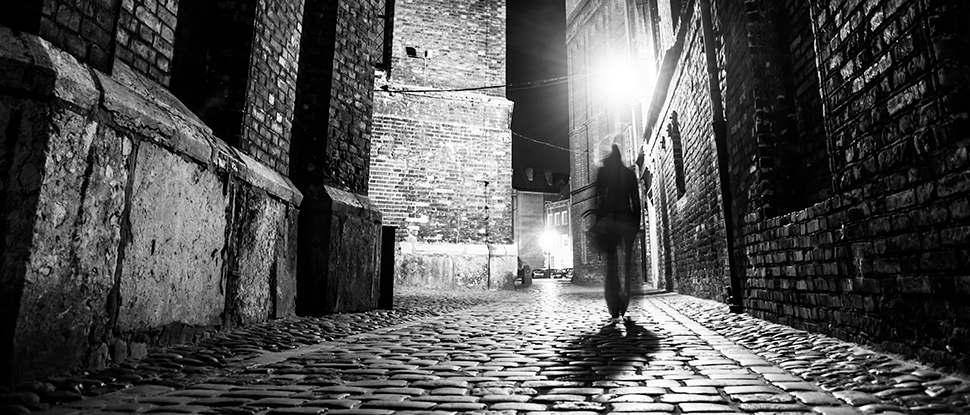5 things you didn’t know about the women killed by Jack the Ripper

Polly. Annie. Elizabeth. Kate. Mary-Jane. Though they have never met, these women are bound by one thing: they were all murdered by Jack the Ripper.
Their deaths have gone down in history as one of the most famous unsolved cases of its time. To most of us, they are simply known just as victims. But who were these women, and what sort of lives did they lead? Here are five things you probably didn’t know about the women killed by Jack the Ripper from Hallie Rubenhold's book The Five: The Untold Lives of the Women Killed by Jack the Ripper.
1. Not all of Jack the Ripper’s victims were sex workers
Jack the Ripper killed prostitutes, right? Wrong. There is actually very little to suggest that three out of five of his victims were sex workers at all. All of the women except one were killed in the open, under the cover of darkness and this led the police to assume that these women were lured there by a maniac killer for sex, even though the coroner’s inquests ascertained that Jack the Ripper never had sex with any of his victims.
In fact, three of the women frequently slept on the street and on the nights they were killed, they didn’t have money for a lodging house. The coroner’s inquests demonstrated that all of the women were murdered in reclining positions and there was no sign of struggle. Rather than reach the conclusion that Jack the Ripper killed women whilst they slept, the police were committed to the theory that the women were prostitutes and the papers, eager to make money, ran with this story. Thus, the legend of Jack the Ripper’s victims was born.
2. None of the five women came from Whitechapel
When most people think of the Jack the Ripper murders of 1888, the word Whitechapel springs to mind. However, none of the five victims were originally from this area, but rather ended up there before they died. Polly Nichols grew up in Holborn, while Annie Chapman spent most of her life between Knightsbridge, Windsor, Belgravia and Piccadilly. Elizabeth Stride was actually born in Sweden and emigrated to the UK to work for a wealthy English family in Hyde Park, whilst Kate Eddowes was born in Wolverhampton and spent most of her adolescence and her twenties in the Midlands. Mary Jane Kelly claimed to be from both Wales and from Ireland.
3. All the women, except one, lived into their 40s
By the time they had the misfortune to meet with their killer, all of the women had lived full and varied lives. Polly had a husband and five children, who lived together in the ‘mod con’ Peabody Buildings in Stamford Street, a scheme created by George Peabody to provide housing for labouring London families. Annie married a gentleman’s coachman and lived on a country estate in Windsor, whilst Elizabeth married a carpenter and ran coffee houses with her husband in Poplar. Even the lesser-known Kate had a common-law partner with whom she travelled the country writing and selling ballads. Mary Jane Kelly, who at 25 was the youngest of the five, had worked in the upper ranks of the sex trade and had lived in Knightsbridge.
4. They all had their own struggles, from fraud to violent partners
In the Victorian era, life did not offer working-class and lower middle-class women many options, and the five each had their own private battles to fight. Polly took the bold move of leaving her unfaithful husband at a time when the law offered no real protection for working-class women whose marriages broke down. Annie struggled with alcoholism and attended one of the first alcoholic rehabilitation centres in Britain for middle-class women. Elizabeth’s path led her to become an accomplished fraudster, while Kate contended with a violent partner and her own issues of addiction.
5. Middle-class society judged all five women to be moral failures
The cards were stacked against all five of these women. Not only were they born into working-class families, and in a time of poverty, they were also born female. They would never earn the income of a man, and their golden ticket was to get a job in domestic service. It was their duty to serve their husbands, produce children and maintain an unimpeachable character.
As both Polly and Annie had parted with their husbands, society regarded them as ruined women. The same could be said of Kate, who lived in a common-law partnerships and had children out of wedlock. Elizabeth was considered ruined twice; once when she found herself pushed into state-run prostitution in Sweden and a second time when her marriage broke down. Although only Mary Jane was a professional sex worker, the same disdain and disgust that 'respectable society' reserved for a prostitute was levelled the other four women as well. They were all regarded as sexually and therefore morally ruined.
These women are more than just bodies lying on a street, or a bloody bed. They each have their own stories to tell, and Hallie Rubenhold carefully reconstructs the lives of each of the women in her book.
The Five: The Untold Lives of the Women Killed by Jack the Ripper is out now.